The original author: Jaleel 加六, BlockBeats
When it comes to the summer of 2022, many people still remember the popularity of StepN at that time. Buying a pair of running shoes and earning profits through daily exercise has become a major trend in the cryptocurrency and technology circles.
Two years have passed, and StepN has launched a brand new 2.0 version - STEPN GO, which is the third game developed by the game developer Find Satoshi Lab after StepN and Gas Hero. Although this new version is still in the testing phase and the player base is still small, its improvements in profit mechanism and design have already attracted the attention of many new and old players.
Aming is an old player of StepN and now an early participant of STEPN GO. In his experience, the performance of the GGT token is good. With a pair of level 19 running shoes, he can earn about $300 per day. He also mentioned that "the current payback period is about 30-40 days," although there is still uncertainty, this is already quite good for old players.
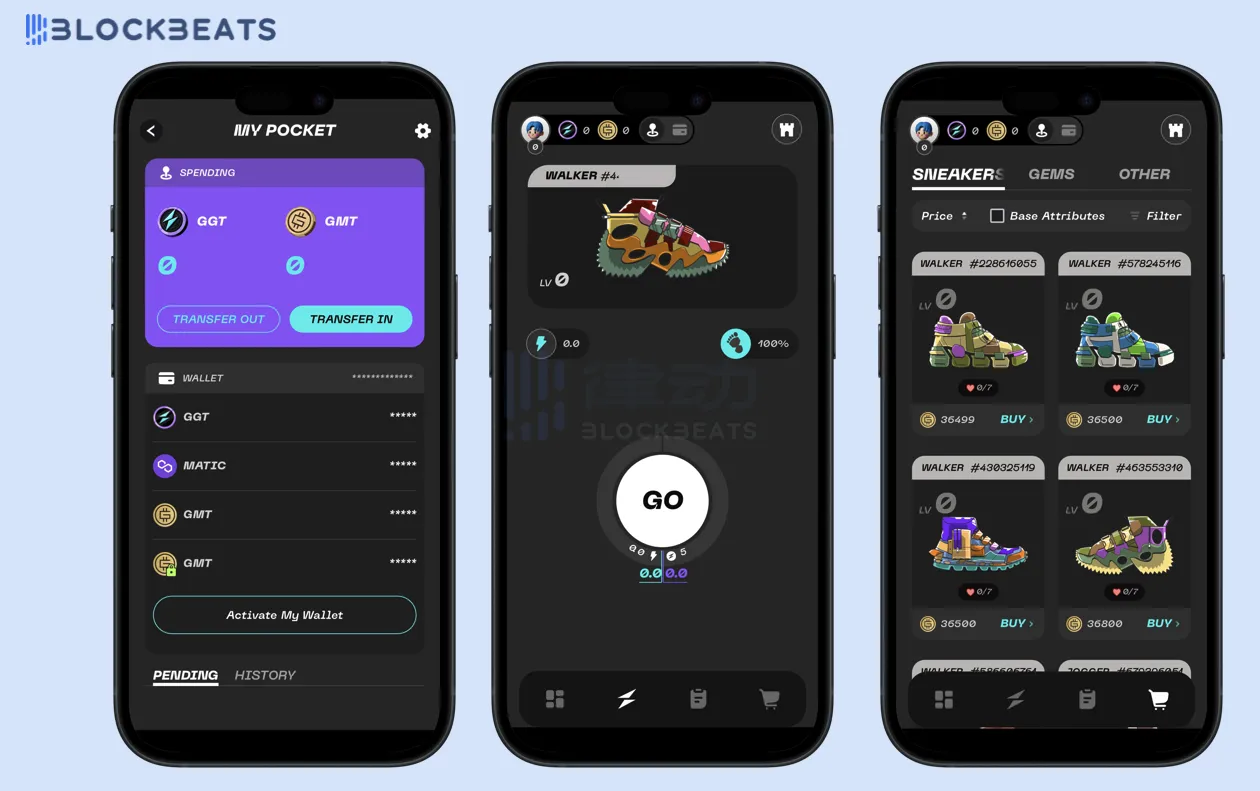
STEPN GO game interface
In this article, BlockBeats will delve into the "upgrades" of STEPN GO, the entry barriers for new users, and the profits and payback period that players are most concerned about. It is important to note that STEPN GO is still in the testing phase, so specific data may change with game updates.
What are the upgrades in StepN 2.0?
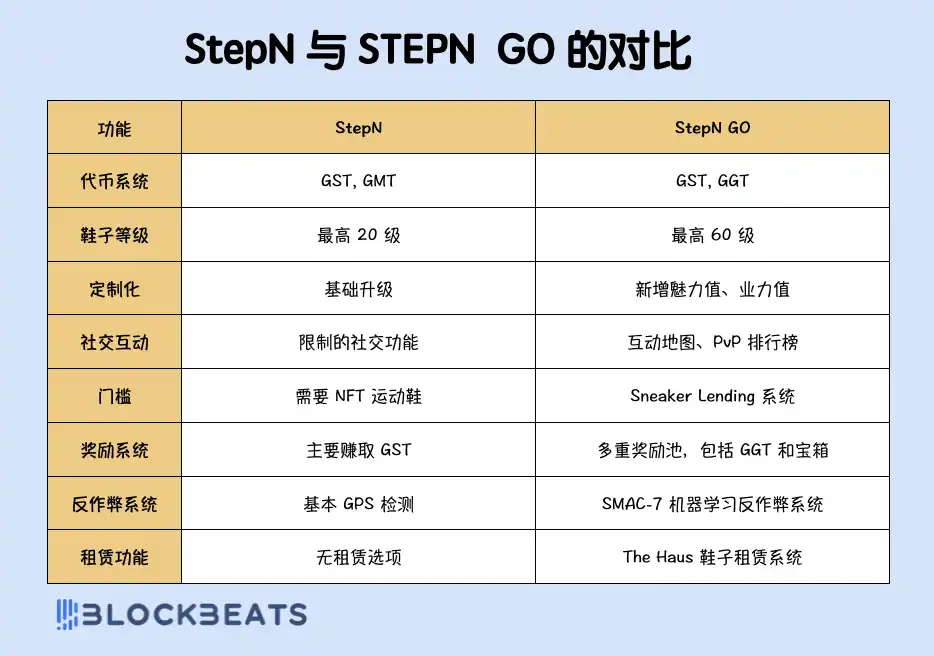
GGT: New GST
StepN uses GST and GMT as the main tokens, while in STEPN GO, a new token called GGT (Go Game Token) has been added. It is deployed on the Polygon chain and has no token quantity limit.
Since its launch on September 5th, the price of GGT has fluctuated significantly. Just one hour after its launch, the price soared by 2120%, then quickly fell back to around $6. However, after a period of fluctuation and adjustment, the price of GGT has shown a steady upward trend in the past week. As of the writing time on September 12th, the price of GGT has risen to $10.
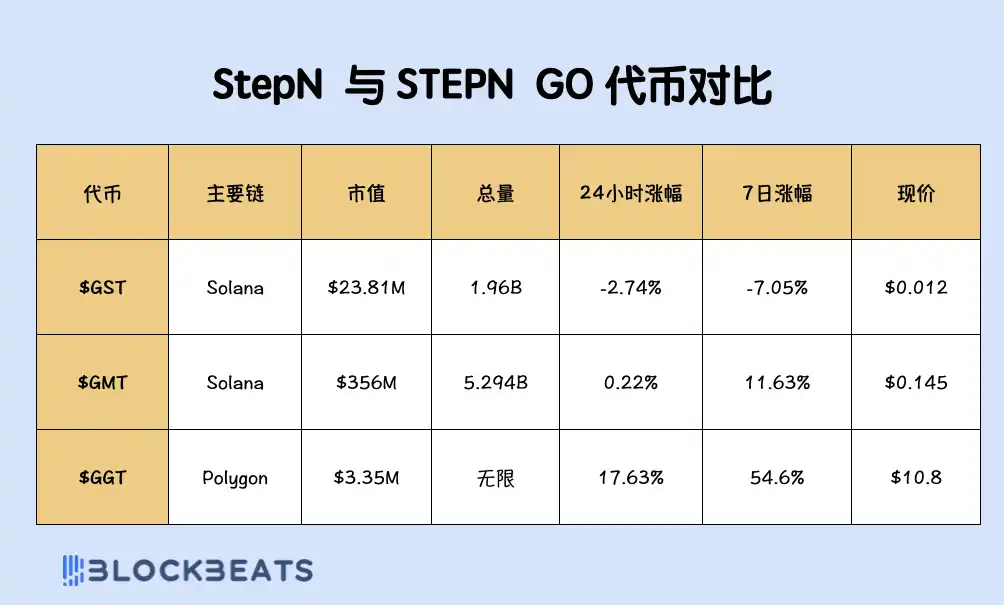
GGT is mainly obtained by completing daily outdoor exercise tasks. Users can choose to earn GGT when using NFT sports shoes for exercise. There are many factors that affect GGT earnings, including shoe type, level, efficiency attributes, and shoe quality. For example, running shoes (Runner) usually earn more GGT than jogging shoes (Jogger).
STEPN GO also implements a daily income limit and token destruction mechanism. Users initially have a 5/5 daily GGT limit, which can be increased to a maximum of 300/300 through upgrading sports shoes or destroying gems. Users can "burn" GGT to forge and "breed" new sports shoes, upgrade existing equipment, unlock slots, make clothing, and even initiate or participate in activities on the interactive map. The burned GGT will be permanently destroyed, reducing the circulation in the market, maintaining the balance of the ecosystem, and controlling token inflation.
Shoe level and customization system
In StepN, the maximum level of shoes is 20, but in STEPN GO, the level limit has been increased to 60. In addition, new attributes have been added: Charm and Karma. These attributes not only affect the performance in the game but also affect player social interaction and competition.
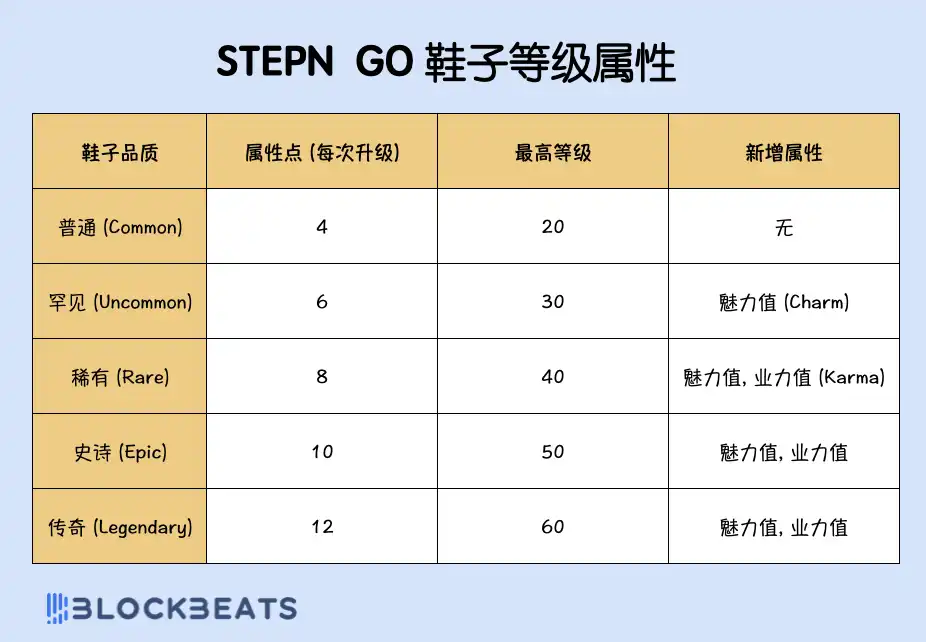
Charm can help players obtain more clothing fragments in the game, while Karma affects the performance on the PvP leaderboard, with higher Karma resulting in more rewards for the user.
Users can upgrade their shoes to improve these attributes. During the upgrade process, users will consume a certain amount of GGT, and at certain high-level stages, they will also need to consume GMT. Shoes of different qualities will receive additional attribute points after each upgrade, and users can freely allocate these points.
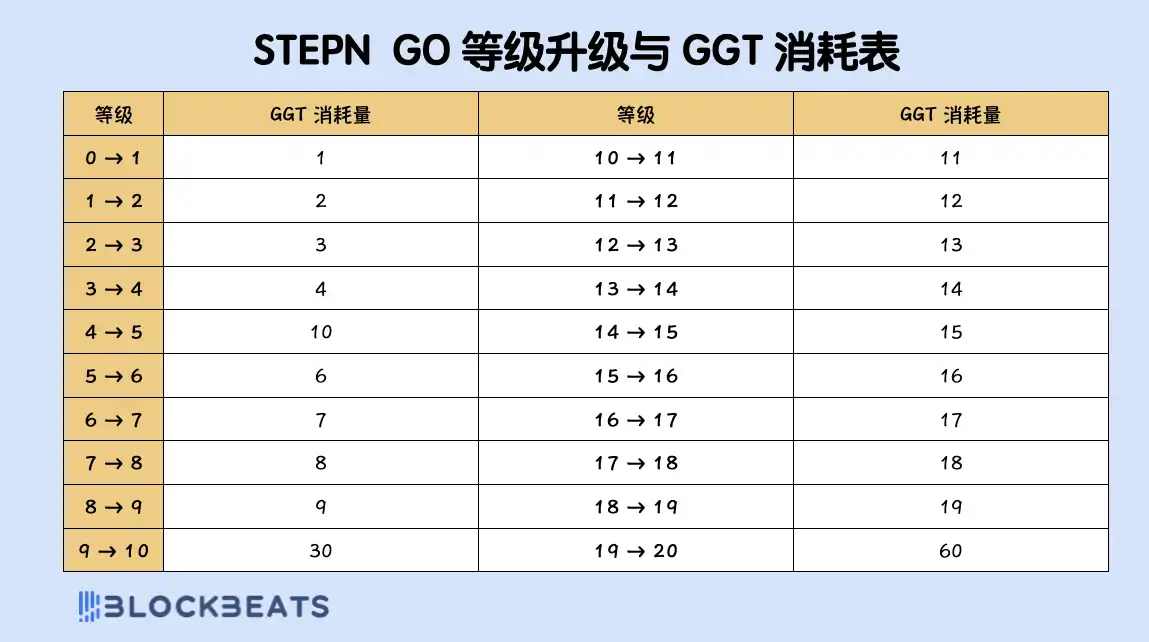
New gameplay of shoe rental: Turning running shoes into financial tools?
In StepN, users can only participate in exercise and earn profits by purchasing and holding NFT sports shoes. Although the 1.0 version once envisioned the introduction of shoe rental, it was not eventually launched, leaving users to use the purchased shoes alone without sharing with others.
However, as a 2.0 version, STEPN GO has realized this long-awaited feature and launched The Haus system. This system is similar to a sharing economy platform, allowing users to list idle shoes on the platform for others to rent.
For the shoe owner, renting out shoes means that even if they don't have time to exercise, they can earn additional income through rentals. Shoes thus become more like a financial tool. For the renter, the cost of buying two pairs of shoes is high, estimated to be about $8000 at the current price. However, STEPN GO's The Haus system provides a low-cost entry path, allowing users to experience StepN GO and earn GGT or other rewards without having to purchase NFT sports shoes.
In addition to these three important feature upgrades, STEPN GO has also enhanced social interaction, reward mechanisms, and anti-cheating systems. In STEPN GO, users can view nearby runners through the interactive map or compete with global players through the PvP leaderboard. This design breaks the previous single-person exercise mode and adds more social elements.
Furthermore, STEPN GO has added diverse reward options. Users can not only earn GGT through exercise but also search for treasure chests and unlock clothing fragments. To ensure fair play, the platform has introduced a more advanced SMAC-7 anti-cheating system.
The "narrow gate" for running shoes, how much has the threshold increased?
"The design adjustments made by STEPN GO are very clever, and the team has clearly drawn a lot of experience and lessons from StepN and Gashero." Aming is an old player who participated in StepN in the early 2021, and now he is also an early player of STEPN GO. In his view, the design of STEPN GO has greatly improved the game's lifecycle and sustainability, making this experiment more viral.
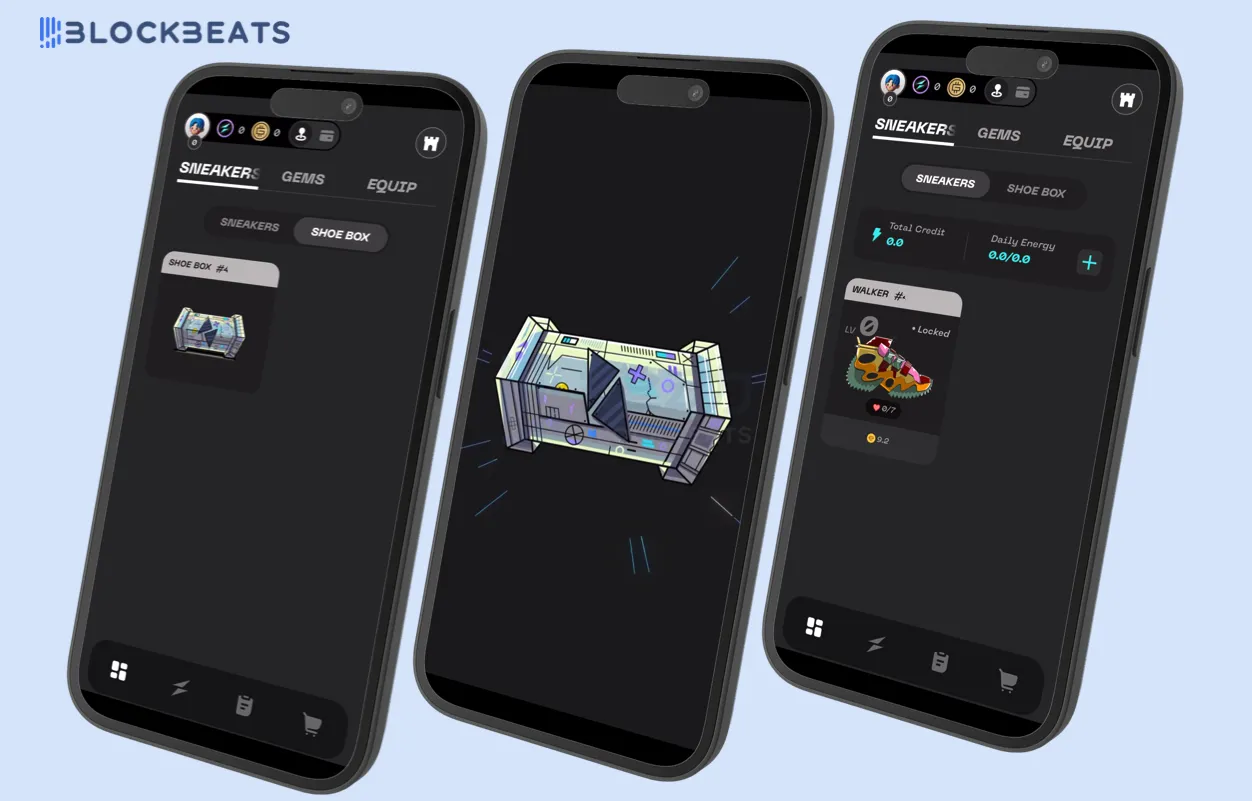
STEPN GO open box interface
STEPN GO is very strict in controlling the invitation codes in the early stages. The mother shoes purchased from the Mooar market cannot be used for running directly. Only shoes with activation codes can be used to start running. It seems that in the strategy of STEPN GO, controlling the growth of new users is also a way to maintain the lifecycle of this mechanism.
This can also be seen in the data. In the past 30 days, the new user increment of STEPN GO has decreased from over 400 people initially to around 50 people now.

"StepN was too FOMO at the beginning, and the shoe growth mechanism was too aggressive, so the later profits were overwhelmed. The total amount in the cryptocurrency circle is here. Slowly squeezing toothpaste-like growth, the entire running shoe ecosystem can survive longer." In Aming's view, the control of the threshold for new users to enter STEPN GO will continue for a long time.
Aming obtained the running shoes by participating in a lottery after staking GMT in STEPN GO. "Of course, this is also criticized by many people. The staking period for GMT is 4 years. Who knows what it will be like after 4 years?" Aming complained.
In addition, the only way to obtain an invitation code is through gifting or renting out shoes. "Of course, the official will also conduct activities such as lotteries through various channels, and it is estimated that there will be some relaxation in the future," Aming also revealed to BlockBeats that a small number of invitation codes will be traded in some off-exchange channels.
It is almost impossible to be given an invitation code for free. There is still a chance for the rental shoes in The Haus system, but it is still scarce. "Seeking the owner, waiting online," many users in the STEPN GO community channel are looking for "owners willing to rent out shoes" to participate at a low cost.
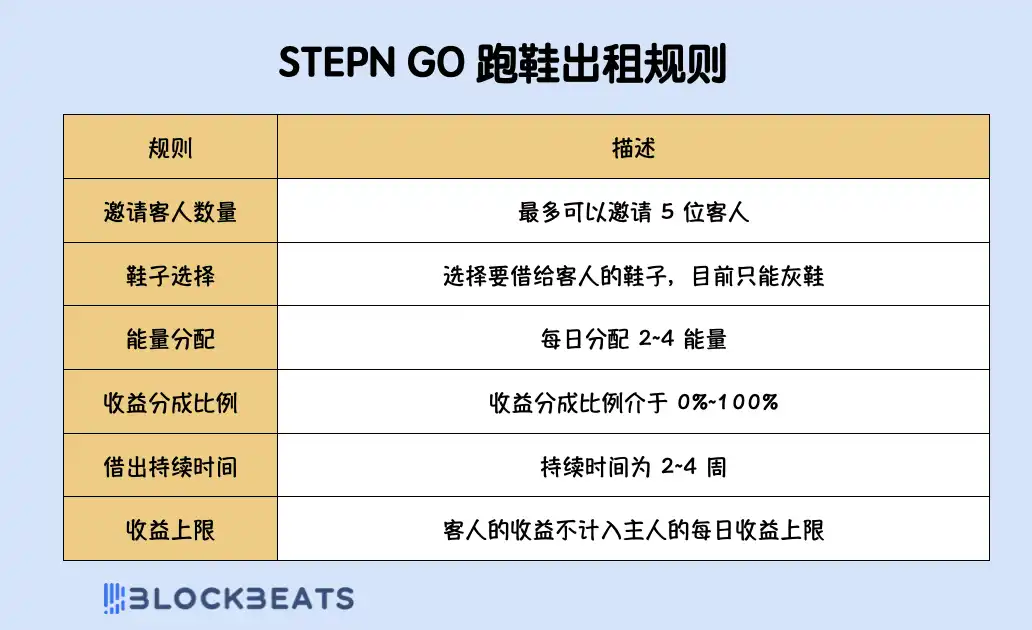
Currently, in the market, the profit distribution between successful "shoe owners" and "renters" mostly follows a 9:1 or 8:2 split, and the rental period is generally in units of two weeks. However, for the shoe owner, if they encounter a renter who is inconsistent in using the shoes, the opportunity cost and time cost of the shoes will be wasted, especially with The Haus system being a new thing.
Therefore, there are relatively few users willing to rent out shoes. Most people choose to burn the shoes to obtain energy or to rent the shoes to family or friends rather than strangers.
High risk, high return? How about the profit and payback period?
Aming currently has level 19 shoes, and because he has increased the limit once, he can consume 3 energy points per day and earn 26 GGT. Based on the current GGT price of $11, he can earn about $300 in profit per day.
"It's difficult to calculate the payback period because the daily energy consumption limit and earnings for beginners and later stages are actually different, so it can only be estimated," Aming said when asked about the payback period.
If we do not consider the special effects of the shoes, Aming estimates the payback period to be around 30-40 days. Based on his cost calculation, staking GMT to win a pair of running shoes and spending around $4000 to buy a pair of shoes and burn it for energy on the market, the cost is around $5000.
He can earn 22 GGT per day. However, since upgrading the shoes will consume some GGT, the actual payback period is probably around 25 days. Aming mentioned that burning a pair of shoes can earn 90 energy points, and in the early stages, the daily energy limit is 2 points, which means the user can run continuously for 45 days. After the 20th day of payback, the remaining 15 days will be pure profit.
"Of course, this estimate ignores many influencing factors, such as the daily energy consumption limit in the later stages may increase to 3 points, the bonus from the special effects of the shoes, the fluctuation of GGT prices, the user growth rate, and other profit methods, such as making shoes and renting shoes," Aming added, stating that these factors will have a certain impact on the profit.
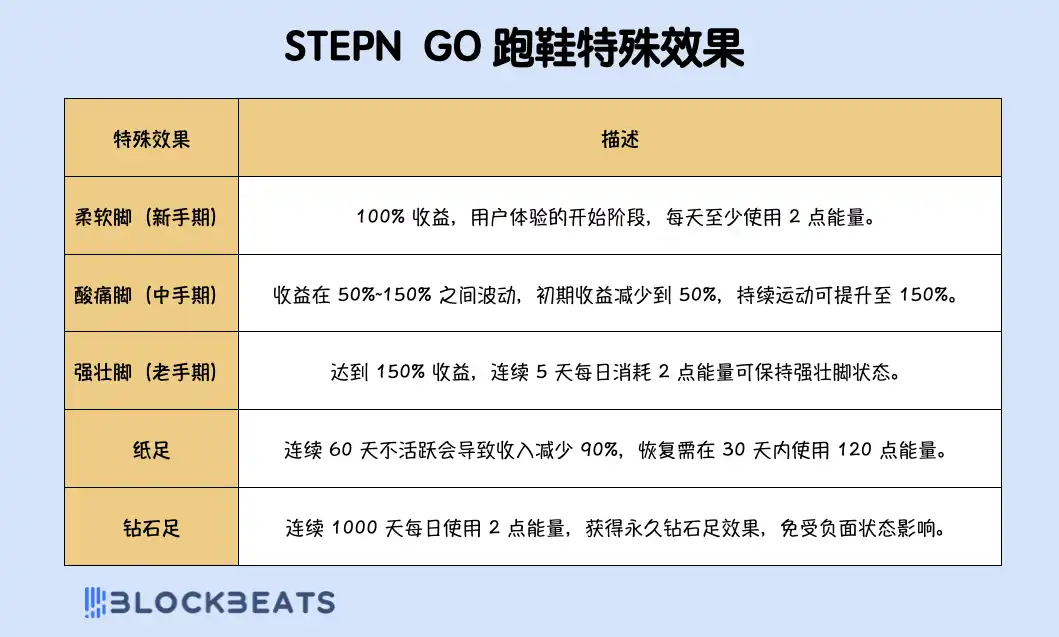
Currently, most users in the market estimate the payback period to be around 30 days, which is a generally accepted time frame. Another player, Max, who has been involved in the internal testing for a long time, recalled that the payback period for early StepN was only 7-14 days, while the payback period for STEPN GO has now extended 2-3 times.
Max believes that the biggest factor affecting the earnings and payback period of STEPN GO currently is the price of GGT. He pointed out, "GGT is actually the new GST, but its production cost is higher." Aming also expressed a similar view in the interview.
Therefore, Aming pays close attention to the data on the destruction and production of GGT. From several data sources, it can be seen that since September 10th, the destruction of GGT has been greater than the production, and the difference has been similar in the past few days. At the same time, the trading volume of the $GGT/GMT trading pair has also shown a significant increase in several DEX, which makes Aming and Max maintain an optimistic attitude towards the short-term price trend of GGT.

The short-term rise of GGT is undoubtedly good news for early participants like Max, but for new players who have not entered yet, this may not be so friendly. Because the rise of GGT also raises the price of running shoes, from 35,000 GGT a few days ago to 63,300 GGT.

Max also mentioned that as time goes on, the cost of replenishing energy in STEPN GO is about 35% of the total value of the shoes, similar to the "repair" cost in version 1.0, but this cost is fixed when invested in the early stages. He believes that as long as the user growth rate remains at 0.5-0.75% per day, the current price structure can be sustained, which will further support the market demand for shoes and make the floor price healthier.
Overall, the 2.0 version of STEPN GO has brought many innovations to the entire running shoe ecosystem, especially in the introduction of the GGT token, the launch of the shoe rental system, and the more strategic entry threshold design. For early players, this is undoubtedly a new opportunity, but it also requires a careful assessment of its potential risks and returns.
Considering that the game is still in the testing phase, certain mechanisms and profits may be adjusted over time. As Aming said, "Although the threshold has been raised, it also means that the returns may be more substantial. If you can enter early, the returns from STEPN GO are still considerable."
Acknowledgments: Mable, Aming, Max
免责声明:本文章仅代表作者个人观点,不代表本平台的立场和观点。本文章仅供信息分享,不构成对任何人的任何投资建议。用户与作者之间的任何争议,与本平台无关。如网页中刊载的文章或图片涉及侵权,请提供相关的权利证明和身份证明发送邮件到support@aicoin.com,本平台相关工作人员将会进行核查。




